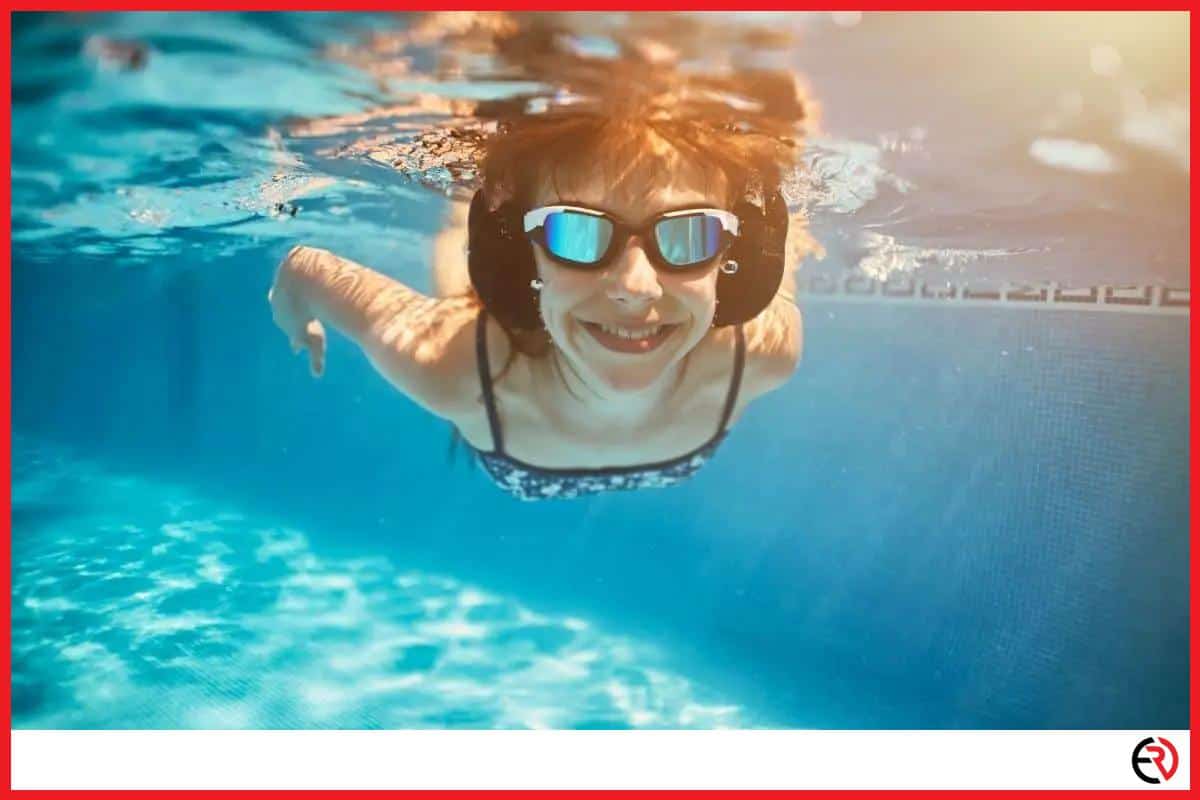Can You Swim With Headphones? (Yes, this is how)
This post may contain affiliate links which means that, if you choose to make a purchase, I may earn a small commission at no extra cost to you.
Whether you are a casual swimmer or a regular at the local pool, wanting to listen to music while swimming is only natural. After all, if runners can enjoy their favorite tunes on the road, and bodybuilders can plug into motivational speeches during workouts, why can’t you do the same?
Yes, you can swim with headphones. However, you cannot use Bluetooth headphones, since every time you dive underwater, the signal weakens dramatically. It’s best to get an MP3 player with the appropriate IP rating and that’s also comfortable to wear with a neckband to firmly attach it to your shoulder.
Water and music players do not mix well together. However, thanks to technology, you can enjoy your favorite podcast to get the blood pumping while swimming.
What level of IP protection is required for headphones during swimming?
You will need at least an IP68 rating to protect your headphones from the onslaught of water for prolonged periods.
IP or Ingress Protection is a rating system that defines the level of protection your device has against water and solid (dust) particles. The first digit indicates the dust tolerance level, while the second signifies liquid tolerance.
IP68 means the device is completely protected against dust particles and can function at a depth of 1m or more. So when you are out shopping for waterproof headphones, make sure to buy one with at least an IP68 rating. Anything lower, and you’ll have to return them the next day.
I once tried a lower IP rated (IP54) MP3 player and it stopped working after an hour of swimming. So, when I say IP68 rating I mean it.
How well can you hear underwater and why you cannot use Bluetooth headphones during swimming?
Bluetooth headphones do not work well underwater. The signal strength decreases rapidly every time you go under, which you’ll do quite often. Moreover, Bluetooth connections are only good for 10m so unless you have someone carrying your phone around the pool, Bluetooth headphones are a no-go.
Bluetooth headphones are quite unreliable when it comes to underwater excursions. All Bluetooth devices operate at a frequency range between 2.0GHz to 2.4GHz. According to the laws of physics, the water molecules attenuate those signals, making it impossible for your smartphone to transmit audio to your headphones. You will not hear a constant stream of music as the Bluetooth headphone will randomly lose connection.
As always, I did not believe this until I tried it myself and found it to be true. My headphones were not even optimized for swimming, so they kept coming off every time I started swimming more vigorously. It’s not worth the hassle.
Bluetooth or wired: Why you cannot use wired headphones during swimming?
Waterproof wired headphones can easily get tangled while swimming. Even if you manage to properly adjust the wire length, an accidental tug can plummet both your smartphone and headphones to the bottom of the pool.
Using waterproof headphones is simply inconvenient. You would also have to buy a waterproof smartphone, which does not come cheap.
I know a friend who tried it once and accidentally ended up ripping his brand new waterproof headphones while swimming. The wire got stuck in his arm and he yanked without realizing it. That was the last time he wore a wired headset.
Is it safe? How can you swim with headphones?
Yes, it is safe to swim with headphones. The reliable way to use headphones while swimming is an in-ear MP3 player. They may be a bit expensive but are perfect water-based excursions. It’s best if you use a neckband so that you do not have to attach it to the goggles or tuck it into your swim cap.
There are no risks to using headphones while swimming, however, if you want a good experience then MP3 players are best because they do not use any Bluetooth signal. They come with an inbuilt memory where you download and store music for later listening sessions.
Most people, myself included, often use a neckband where the electronics are built into the earpiece itself. The controls for these players are located at the side of your ears, which may be difficult to control at first, but becomes easy with a bit of practice.
One more thing you should consider is to buy special membrane or tiered earbuds. These earbuds are attached more firmly to the inner walls of your ears. The cuts or the serrations are there to trap a tiny amount of air inside your ear canal to ensure the sound waves reach your eardrum.
Water is a poor conductor of sound so these special earbuds are essential if you want to listen to music while swimming. My last headphone did not come with these special earbuds, so I had to buy them separately and I would like to say that they are worth every penny.
I recommend the Otium Audio Wireless Sports Earbuds because it comes with a neckband and is quite light.
Not only can they latch onto the inners of my ears more firmly, but I can also now hear things way better than before. I can now also swim without the fear of dropping my headphones into the water. It’s been a nice change of pace.
What kind of headphones are best?
Headphones with bone conduction technology are the best. They are not that common and are quite expensive. However, thanks to recent developments in technology, they are now more readily available and act as viable alternatives to the in-ear headphone units.

Bone conduction technology offers greatly improved playback compared to previous generations of musical devices.
The device is state of the art and delivers sound via a tiny transducer through the bone and directly into your ear canal. The sound unit is placed close to the ear, between the temple and the cheek. It does not go into your ear.
Some of you might think that this might reduce the sound quality, but it does not. On the contrary, the headphone delivers vastly improved sound even underwater. So if you are looking for a headphone that delivers consistent audio while allowing a fair amount of ambient sound to pass through, then go for it.
I have not personally bought bone conduction headphones, but I have tried one of my friends and I must say, they are in a different league and I plan to buy one once my current ones stop working.
Tips for swimming with headphones
1. Wearing swim caps
Wearing a swim cap greatly improves the overall stability and comfort of your headphones. Depending on the ones you are using, some in-ear headphones are prone to falling off, during turns or mid strokes. A cap ensures that your headphones stay in place and do not have to adjust them now and then.
2. Familiarize yourself before diving
Familiarizing yourself with the controls beforehand will save you the trouble and embarrassment of fumbling in the pool trying to change tracks, adjust the volume, or the playback mode.
3. Properly arrange your playlists
There is nothing more frustrating than searching for your favorite swimming song while you are in the pool. So before you enter the water, make sure to have your playlist all sorted out so that you can enjoy a good swimming session without anxiously waiting for the next track.
How to choose the perfect headphone for swimming?
1. Type of headphone
Wired and Bluetooth headphones are not recommended. You’re better off using a waterproof MP3 player or bone conduction headphones.
2. Battery life
Battery life should be an issue because you won’t be spending more than an hour in the pool. Most headphones come with 5-11 hours of playback which is quite decent. I recommend Xmythorig Ultimate because of its huge 3300mAh battery.
3. Fit
You’re going to do some serious activity with these headphones, so comfort is a top priority. If possible try out the pair before buying. Seeing YouTube reviews isn’t always the solution.
Conclusion
Listening to music while swimming is a luxury most cannot afford. You cannot just slap on any headphones and call it a day. Not only do they have to be waterproof but should also fit perfectly, otherwise it deets the whole point of comfort.
Hopefully, this guide has helped you better understand the requirements of waterproof headphones and the how-to choose them in the long run. Good luck!








